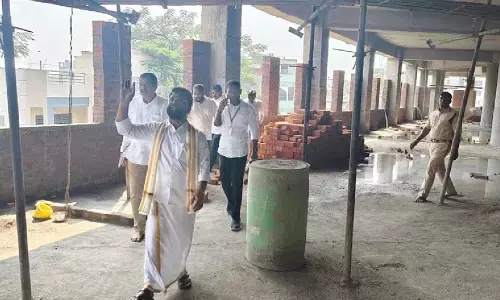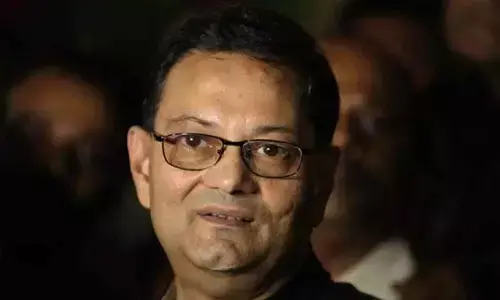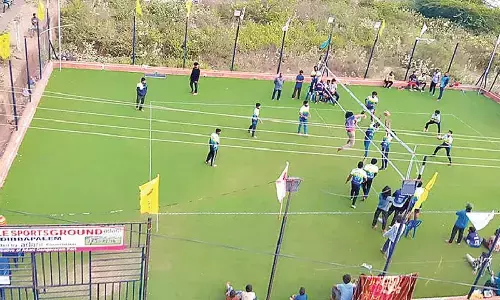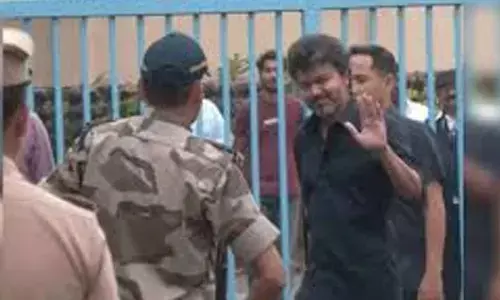Flipping currency notes, old tellers loved task!

A bank cashier's job of yore was a test of mental strength, skill, perseverance and above all keeping one's mind focussed.
A bank cashier's job of yore was a test of mental strength, skill, perseverance and above all keeping one's mind focussed. Those were the days when we were not tech-dependent, and everything was done manually.
"Working in the cash department is like playing with fire," a head cashier would warn us. "Be extra cautious," he would add.
Our fingers and mind worked in sync as we totalled lengthy scrolls and registers without the aid of calculators or adding machines which were non-existent then.
I was drafted as a cashier in the State Bank of India on 2nd June 1980 and posted at the bank's main branch located on St Mark's Road, Bengaluru.
This branch incidentally was the first inland branch of the State Bank of India - all others then were established along the coast. The sprawling premises with its fir and teak was once the home of the British Resident.
The branch headed by an agent was a sight to behold with its stately pillars, high ceiling, spacious hall, imperialistic architecture and wide windows and doors. A guard in uniform welcomed the patrons.
The parking lot was filled with bicycles and there was also a gymnasium, tennis court, table-tennis room and a cricket pitch. Iconic players like C R Anand and G K Vishwanath (table tennis), G R Vishwanath, S M H Kirmani, Roger Binny, S Mahendra, B Raghunath, A V Venkatnarayan, N B Laxminarayan, M R Shivashankar, G R Murthy (cricket), C S Poonacha, Uthaiah Kullettira, Ravi Navalgi (hockey) and Arjun Devaiah (athletics) came through this magnificent edifice.
It is also believed that there was a horses' stable to secure the steeds used by the officers of the erstwhile Bank of Madras.
Back then, the main branch was a jumbo-sized unit boasting of a complement of around 200 employees.
The cash department was staffed with 40 employees. Access to the cash department was restricted for security reasons. A long rectangular table was used for sorting and counting the notes which would then be made into sections, bundled and finally stowed away in the bins housed in the underground strongroom.
The greenhorns learned the ropes at the table before making the cut as a cashier and asked to man the counter. We were enlightened on the security features of banknotes and taught how to distinguish between a genuine and a fake note.
We honed our skills at counting paper currency by flicking the edges of a 200-page notebook with our fingers. The head cashier would watch our every move and rap us on the knuckles if we got it wrong. We were also encouraged to fine tune the art by practising religiously at home.
Many of the seniors amazed us with their speed and dexterity and we used to watch spellbound as they finished their act in a jiffy. Some of them went one step ahead and managed to flick two at a time and finish the job in double quick time. The art of manual counting has been lost to today's generation.
The launch of the Special Bearer Bond Scheme by the Indira Gandhi dispensation in the early 1980s had people with illegitimate money flocking to the branch. The scheme provided an opportunity to legitimise dirty money.
It was during this period that I had the first glimpse of a fake note. The fake notes would be seized and cremated at once to prevent it from falling into the wrong hands.
Two or three heavy-payment counters would be opened on month-ends to disburse the salaries of Defence establishments, government offices and public sector units.
Cheques were written out in crores and this required the cashier to exercise more than ordinary care while making payments. Out of fear, many senior cashiers would resort to applying leave en masse forcing the juniors to occupy the hot seats.
I had my first taste of the landline phone only after joining the bank. Those days the main branch was tasked with the responsibility of reporting the consolidated cash figures of all the branches of the bank located in the city to the local branch of the Reserve Bank of India over the phone.
The hard copies would be despatched by a special messenger who had access to the bank's bicycle. A few months into my new job and I was instructed to take charge of the desk. Enveloped by telephonophobia and with butterflies in my stomach, it took an extraordinary effort on my part to call out the figures!
Technology has its merits, but it has also made a lot of lives miserable. Clients demand 'express service' and banking has become chaotic and stressful.
Old warhorses like me certainly miss the old days when life moved on the slow lane and a bank job was less demanding!















